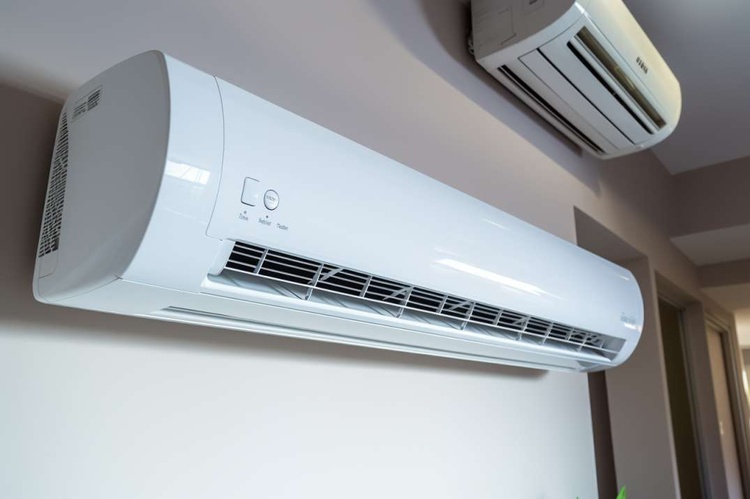Efficient Air Conditioning Without Outdoor Units: Modern Cooling Solutions
Air conditioning technology has evolved significantly in recent years, with one of the most practical innovations being systems that don't require traditional outdoor units. These compact cooling solutions address common challenges faced by urban dwellers, apartment residents, and homeowners with limited exterior space. As housing becomes increasingly dense and regulations more restrictive, air conditioning systems that eliminate the need for bulky outdoor components offer practical alternatives while still providing effective climate control. These systems combine space efficiency with modern cooling technology to deliver comfortable indoor environments without the installation constraints of conventional units.

Compact and Convenient: AC Units Without the Extra Bulk
Modern air conditioning solutions have been redesigned to eliminate the need for outdoor condensing units, dramatically reducing their footprint while maintaining cooling efficiency. These systems typically utilize a single-unit design that can be installed through an exterior wall with minimal structural modifications. Unlike traditional split systems requiring significant outdoor space, these compact units only need small wall openings, usually around 4-6 inches in diameter.
The space-saving benefit extends beyond just exterior considerations. Without the need for extensive refrigerant lines, drainage systems, and electrical connections between indoor and outdoor components, installation becomes simpler and less intrusive. This design approach makes them particularly valuable for historic buildings, apartments with strict exterior appearance requirements, or properties where outdoor space is at a premium.
Modern Cooling Made Simple: How These Systems Work
Air conditioners without outdoor units operate on modified cooling principles that maintain efficiency while consolidating components. Most systems in this category fall into two main design approaches: monobloc through-the-wall units and water-cooled systems. Rather than separating the evaporator and condenser components between indoor and outdoor units, these systems integrate both functions within a single appliance or use alternative cooling methods.
The monobloc units draw in outside air through small exterior vents to cool their condenser sections, then expel warm air back outside through the same wall penetration. More advanced water-cooled systems use municipal water supplies to absorb heat instead of outdoor air, eliminating even the need for exterior venting in some cases. Both approaches result in significantly reduced visual impact on building exteriors while still providing the cooling capacity needed for comfortable indoor living.
Efficient Cooling for Urban Living: Benefits Beyond Space Saving
The advantages of outdoor-unit-free air conditioning extend well beyond just space conservation. These systems offer practical benefits that address multiple urban living challenges. Installation costs are often lower due to simplified procedures that don’t require specialized technicians to run refrigerant lines or mount heavy equipment on exterior walls or rooftops. Maintenance becomes more straightforward as all components are accessible from inside the living space.
Noise reduction represents another significant advantage. With no external compressor operating outside, these systems eliminate a common source of noise pollution that can disturb neighbors or violate community noise ordinances. The sound insulation of the building’s walls further contains the operational noise of the internal components. Additionally, these units often comply more easily with rental property and homeowner association restrictions that limit changes to building exteriors.
Installation Considerations for No-Outdoor-Unit Systems
Installing an air conditioner without an outdoor unit requires different considerations than traditional split systems. While the process is typically less invasive, proper planning remains essential. The most critical factor is identifying an appropriate exterior wall for mounting. This wall must allow for the creation of small vent holes while providing sufficient structural support for the unit’s weight.
Professional installation is still recommended despite the simpler setup. Technicians need to ensure proper sealing around wall penetrations to prevent water infiltration and air leakage. Electrical requirements must be evaluated, as these systems typically require dedicated circuits. For water-cooled models, plumbing connections add another layer of complexity that demands professional expertise. Proper installation ensures optimal performance, energy efficiency, and compliance with local building codes.
Energy Efficiency and Performance Comparisons
While offering convenience and space efficiency, consumers often question how these condensed systems compare to traditional air conditioners in performance and energy consumption. Modern no-outdoor-unit air conditioners have improved significantly in efficiency, though differences remain compared to premium split systems.
| System Type | Energy Efficiency (EER) | Cooling Capacity Range | Average Installation Cost | Lifespan |
|---|---|---|---|---|
| No-Outdoor-Unit AC | 8-10 EER | 5,000-12,000 BTU | $1,000-$2,000 | 10-15 years |
| Traditional Split System | 10-12+ EER | 9,000-60,000 BTU | $3,000-$7,000 | 15-20 years |
| Portable AC Units | 6-8 EER | 5,000-14,000 BTU | $300-$700 | 5-10 years |
| Window Units | 8-12 EER | 5,000-25,000 BTU | $150-$800 | 10-15 years |
Prices, rates, or cost estimates mentioned in this article are based on the latest available information but may change over time. Independent research is advised before making financial decisions.
Limitations and Best Applications
Despite their advantages, air conditioning systems without outdoor units aren’t ideal for all situations. They generally have lower maximum cooling capacities than full split systems, making them less suitable for larger spaces or extremely hot climates. Most models can effectively cool areas up to about 500-600 square feet, depending on ceiling height, insulation quality, and sun exposure.
These units typically work best in moderate climates where extreme cooling demands are infrequent. They’re particularly well-suited for supplemental cooling in specific rooms rather than whole-house solutions in larger properties. Urban apartments, historic buildings with exterior modification restrictions, rental properties, and small offices represent the most appropriate applications. For consumers evaluating these systems, balancing the convenience against potential capacity limitations remains essential for satisfaction with the final installation.
Air conditioners without outdoor units represent a practical solution to space constraints and installation challenges while providing effective cooling for appropriate applications. As technology continues to advance, we can expect further improvements in their efficiency and capacity, making them increasingly viable alternatives to traditional air conditioning systems for modern living spaces.




